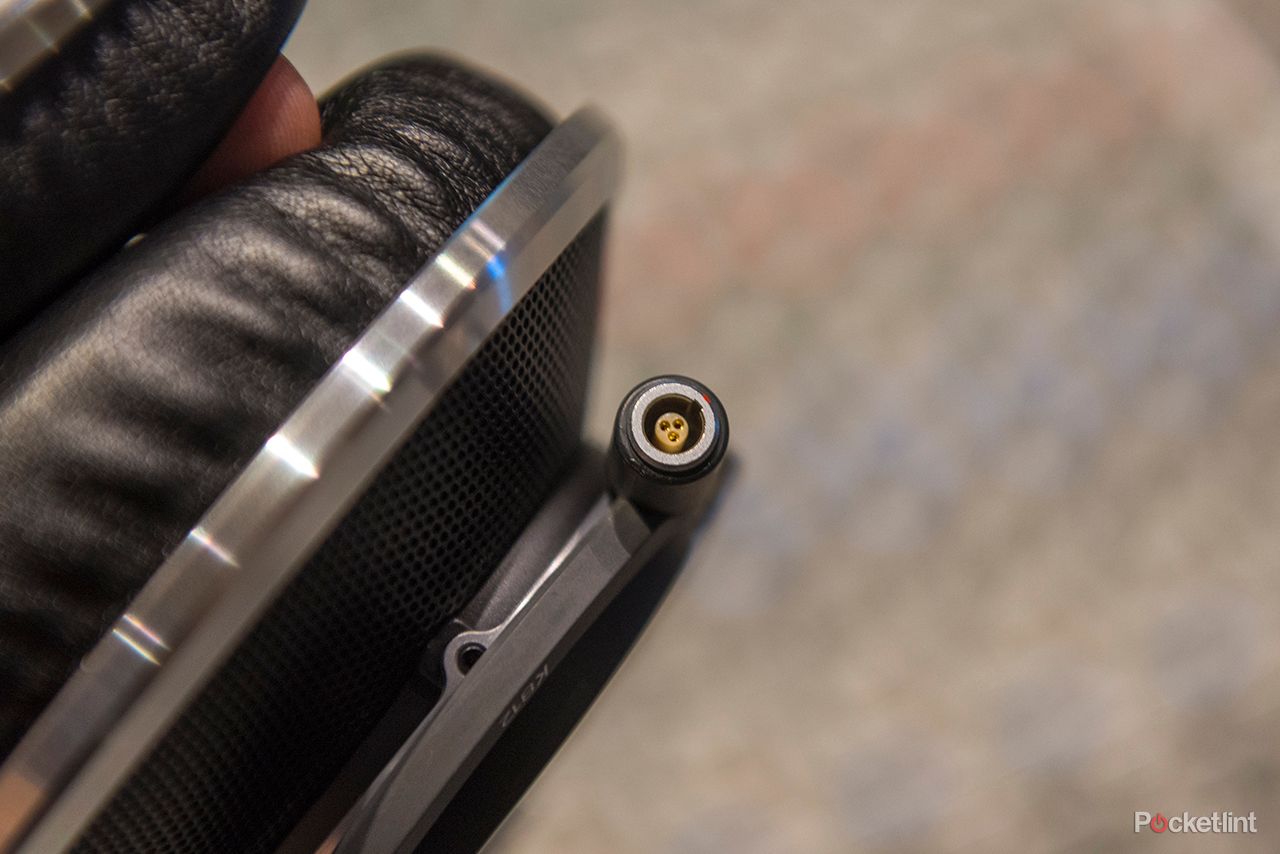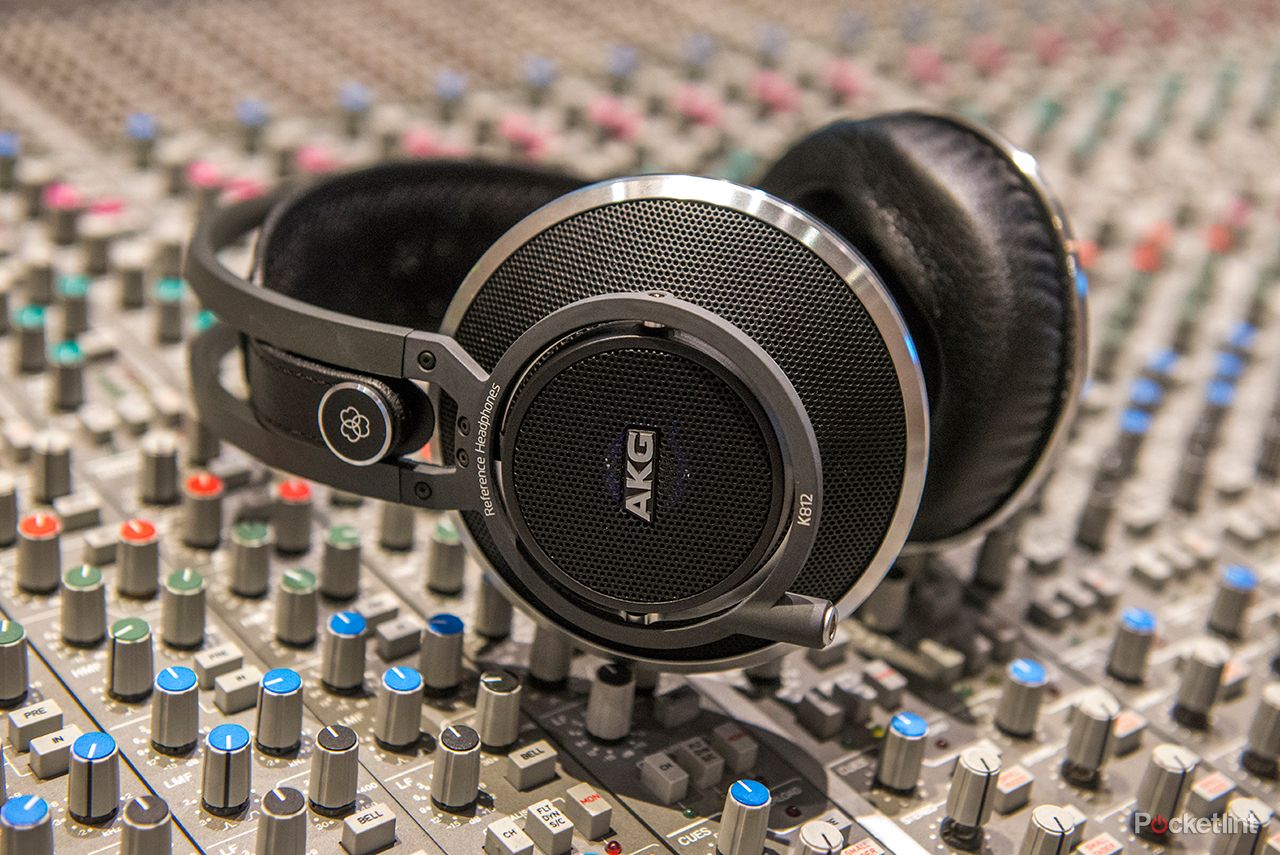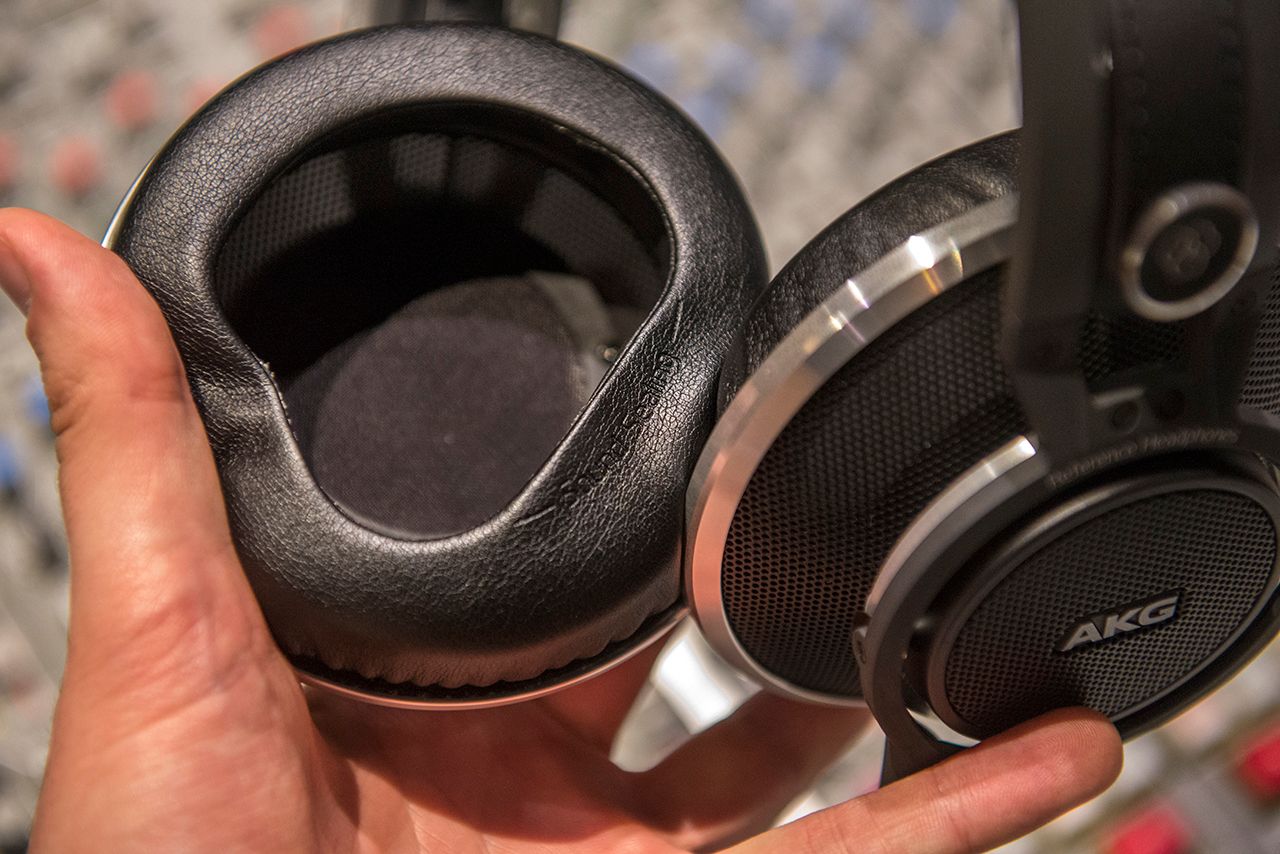Sometimes we get asked to do the strangest yet most exciting of things here at Pocket-lint. So when we were invited down to Red Bull Studios in London to check out AKG's latest top-spec studio monitoring headphones we couldn't resist.
Enter the AKG K812. It's hard to describe them as just "headphones", as these aren't cans aimed anywhere near to the average punter. All the studio engineers reading these words will already know that, of course.
Nope, the K812 studio monitoring over-ears are all about delivering that detailed yet neutral sound with the most open-spaced listen. When we first put them on it did feel a bit like wearing air.

There are a couple of reasons for that. First, the flexible, adjustable headband has left and right locks so it's possible to fix your preferred position rather than spending a stack of cash on an auto-adjusting band that will just become less firm over the years. In the case of the K812 it's super-comfy, although the plasticky looking adjustment clips, that click into place on the up and need to be released with a press on the down motion, don't look particularly top notch.
Second is the huge open ear cups that seal all the way around the ear. These aren't perfect circles, as the K812s ensure the whole ear is enveloped by a slightly irregular shape that's designed to fit to the ear. However they're made from artificial leather - "pleather" if you will - and they're not sealed from exterior audio, not that we expected them to be. The only sounds you're likely to want to hear in the studio are what you're working on.
On the inside the K812 are a pair of 53mm-diameter membranes driven by magnetic transducers. It's the largest the company makes and it also touts having created a newly specified magnet system design to cater for the correct field strength, size and weight ratio. Other technology is designed to protect the membranes to ensure that they cannot break by driving too much volume. So crank it up to 11 and you're safe.

We listened to the AKG K812 monitors in conjunction with a Lehmann Audio Linear Pro Headphone Amplifier, with audio delivered from a Sony CD player via XLR. The provided AKG cable, included in the box, is complete with mini-XLR terminal for the utmost sound quality. There's even a wooden stand in the box.
And you know what, they do sound really great. Largely due to the space that they afford the sound. Everything feels as though it's sat at a given distance from your ears, which is ideal for spot-on stereo mixing and helps gather a true sensation of how different channels sit within a mix.
The sound is very detailed, the mids and highs almost sharp and the bass only moderately present but, in that monitor fashion, it's fairly flat and neutral. If anything we'd say that those carving out ungerground dance music while compressing sounds to the wall aren't going to get what these AKG over-ears are all about. It was as we were listening to Pink Floyd's Time that the whole concept made perfect sense, or the way a live version of Eagles' Hotel California gave a masterful break down of how well a live recording can be mixed.
Supposedly the 36ohm impedence means you don't have to have a dedicated amp to listen and AKG claims you can get enough volume out of a laptop when tinkering around with some sketches in Ableton or the like. We didn't have a laptop on hand, but plugging the K812s into an HTC One and listening to a variety of music - from Jon Hopkins, through to Klute just to see what happened with modern day piano and bass-heavy low-end - and we were met by distortion at full volume. No good for that quick test then.
But who're we kidding, plugging these into a smartphone is pretty laughable really, it's not their goal nor purpose. If you're seriously in the game, and whether you're mixing down at home or have these resting on the side of your chair in a pro studio, then be prepared to make a serious investment. A £1,000 investment, no less, which will translate into 1,200 euro on the continent or $1,500 in the US. Yowch.


